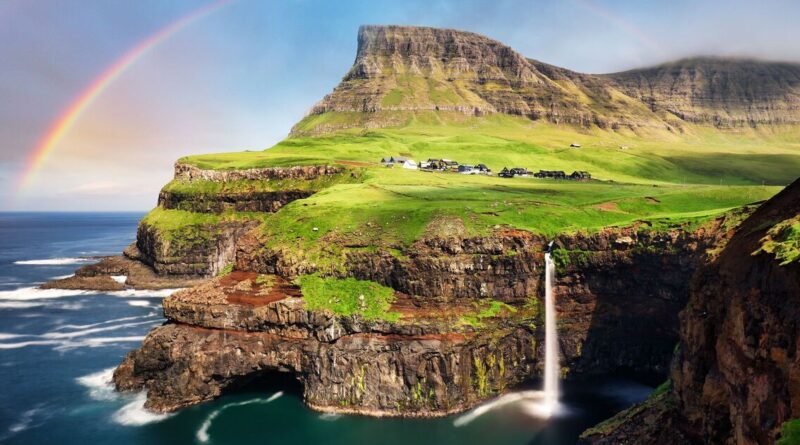Europe’s incredible £535m tunnel system with its own roundabout under the Atlantic | World | News
Journeys that once took over an hour have been dramatically reduced to just 15 minutes, thanks to the construction of a remarkable network of tunnels linking the Faroe Islands in the North Atlantic Ocean. Previously, the only way to travel was by boat, which could take up to half a day, depending on the weather.
The Faroe Islands, an autonomous territory of Denmark located midway between Iceland, Norway and the UK, are home to around 54,600 people as of January this year, spread across a total of 17 habitable islands. While this may seem like a lot of people in a land area only covering 538 square miles, there are actually 20,000 more sheep than humans. The terrain is rugged, dominated by fjords and cliffs with sparse vegetation and few trees, and it is often described as a place where you can experience all four seasons in 24 hours.
With this number of environmental challenges, it’s no surprise that this ambitious tunnelling project has been in the making for quite a few decades. The project began back in the 1960s, with 20 tunnels constructed at a total estimated cost of at least £535 million.
Today, the islands boast over 31 miles of road tunnels, roughly equating to one metre of tunnel per resident.
The Eysturoy tunnel, inaugurated in December 2020, represents the largest investment in the project, with an eye-watering estimated cost of £300 million. This 6.8-mile tunnel, connecting Streymoy (home to the capital, Tórshavn) with Eysturoy, took approximately four years to complete.
However, when you look at the list of records it holds, the cost and length of time it took to create this engineering marvel are hardly surprising. Not only is the tunnel the second-longest of its kind in the world, but the eight-minute drive through it also offers a mind-boggling visual spectacle.
The Eysturoy tunnel is home to the world’s first undersea roundabout, the “jellyfish roundabout”. 236ft below the Earth’s surface is a giant pillar of illuminated natural rock left behind during blasting construction.
An 80-metre steel sculpture of figures holding hands surrounds the entrance, symbolising a powerful message.
“The figures are walking from darkness into the light,” explained Trondur Patursson, the Faroese artist behind the creation, “And they symbolise the very Faroese idea that by joining hands and working together we achieve great things”, he told the Guardian.
A special radio station plays Faroese music throughout the tunnel system, specifically programmed to enhance the drive. Thousands of vehicles pass through the tunnel daily, each paying around £25, which is then reinvested in further construction and maintenance.
The speed and efficiency of the Faroe Islands’ tunnel network have made it the envy of other island nations, including its closest neighbour, the Shetland Islands. North Isles MP, Alistair Carmichael, said in December 2023 that while tunnel links are not a “cure-all” for every issue, “if we learn from our Northern neighbours in the Faroe Islands and create a credible plan for their implementation, then the results could be transformative for Shetland”.





